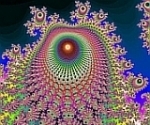I have placed these screen grabs on my website.
As most will realise, the machine is a standard Bilevel
(no T control on this particular one - I expect to have
a VPAPIII S/T model in about 2-3 weeks).
http://www.internetage.com/cpapdata/dsm-vpap3-1/
With AHIs in the 40-60 range - not very impressive
DSM
#2 Some explanation of the charts. The date/time is incorrect
for the 1st 4 nights of the 5 shown as the machine came from
the US and was still set for US date/time. I changed that prior
to the last chart (last night's data).
Also the leak rate in the 1st 3 nights is unusually high because
I found the uper vent in the UMFF was leaking until I pushed
it back into place. On 4th & 5th nights the leak rate drops back
to a more acceptable figure.
The 1st 3 nights were just over 2 weeks ago. Used it for 3
nights just to try it out. Wife complained about the whine/hum
so I reverted to my PB330 A/C.
I resumed using the VPAPIII 2 nights ago after putting the
machine under the bed & with a pillow on it, wife still complains
about the motor whine/hum - I am not at all bothered by it.
I want to use this VPAPIII machine as it is the 1st useable
Bilevel in the collection that actually records detailed nightly
data. I have a Bipap Pro 2 & am willing to give that 1 or 2
nights by using a nasal pillows mask but really want to be
able to use UMFF so I can get apples to apples comparison
of results. But with UMFF mask I can't get a good pattern
going on that machine.
Am interested as to if the VPAP III S/T when it turns up,
will have some impact on the HI readings showing in these
charts.
I must admit I at first just didn't believe them as I thought
I was getting a reasonable night's sleep. I am concerned at
what I feel is a foggy headedness increasing over the past
couple of months. I went through a similar initial wow factor
then decline when I started on cpap/auto. The improvement
was distinct and noticeable when I started with the PB330 A/C
set with timed mode on.
I have been wondering if it is possible that some of us on
cpap therapy, may build up a kind of reaction to the therapy
over a few months & thus begin to negate it. I have been
feeling this was happening to me. When I look at the linked
charts, I can't believe the AI & HI numbers allowing that my
ipap is set at 15 !. The worrying thing for me is the consistency
of the patter night to night & when I compare my charts to the
ones FrequenSeeker sent me - I am somewhat deflated.
FrequenSeekers charts look so clean !.
DSM










